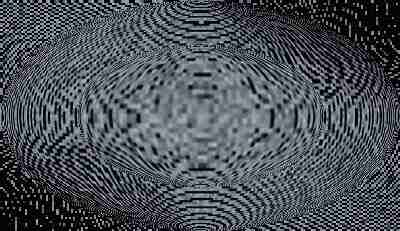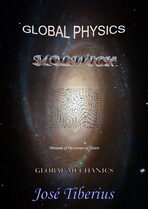3.b.2.c) Electron configuration in the Global Atom
We have just seen what the electrons are, and meaning of their motion within an orbit in dynamic equilibrium. We had also previously seen special characteristics of the electron mass.
Now we are going try to understand the configuration of electron orbits from an analytical perspective; that is, which the points of equilibrium of different forces are, and why these points are in points of the gravito-magnetic potential valley.
For a more straightforward presentation of electron configuration, electron motion, and electron mass, let us look at the following elements of the atom one by one, despite coexisting in the atomic structure.
The goal is to communicate bit by bit:
Orbital levels of the electron configuration of the atom
The relation between the electron motion, its mass, and the gravito-magnetic field will determine the electron configuration and its orbits.
Naturally, the electron mass or wavine comes from the kinks or half-folds of the reticular structure of matter or Global Aether, and it will depend on the transversal tension and the physical limit of filaments of Global Aether resistance to such tension.
Therefore, since the torsion force is discrete, the orbital levels, the electron mass and the energy of change between some levels and others of the electron configuration will also be discrete. As always, the electron motion is purely mechanical, and there is no magic involved, nor are there forces at a distance, otherworldly dimensions or time traveling, nor Alchemy, nor anything of the sort.
The complex Rydberg constant and their modulating various numerical series bring all these relationships in the structure of the atom with mass and electron motion together.
Gravitational Law of Equivalence
g = [ c² * h * R / G ] * nThe Rydberg constant is in the GigaChron experiment. For this experiment to have a positive result in every case of electron configuration, we need to modulate the Rydberg constant for the different orbital levels.
[ G * g = c² * h * R * n ]
The Balmer, Paschen, and Lyman series adjust the different levels of energy of the electrons with the Rydberg constant (the wavelength appears in all the numerical series mentioned above, but we know that it corresponds to the frequency and, consequently, to the energy).
Annulment of the positive electromagnetic charge
In the new electron configuration of the atomic structure, the electron is a half-fold, loop, curl, spiral or particle belonging to the family of wavons. It creates where the two forces of torsion meet; forces which have the same spin in the direction of their movement but are opposed to each other.
Both the creation of the electron mass as well as the electron motion is a result of the mechanism of elastic relaxation of the transversal torsion forces. Consequently, both forces dissolve, and the electric charge of the whole disappears.
It can also mean the difference in magnetic potential between a positive charge and a neutral mass or a null electromagnetic potential. In any case, the mechanism of elastic relaxation is the same.
Electron configuration Atomic structure 
What has happened is that energy of transversal tension transforms into the energy of reversible deformation or elastic deformation tension; that is, an accumulation of electromagnetic energy in the form of the half-fold or curls, in other words, physical mass.
A third possibility is that the exterior of the atom has a significant negative charge, so more electrons than needed form to neutralize it, and the atom will end up with negative electric charge.
This condition of equilibrium of the electron configuration is also in the formulation of the GigaChron experiment.
Annulment of the gravitational force
Meanwhile, something similar happens to the tension of longitudinal curvature in which, before changing the sign of the convexity of the lines of gravitational tension, a point of inflection will occur, where the force will also be null. We have mentioned already the need to modulate the force of gravitation in the surroundings of the atomic nucleus due to the spatial configuration of Global Aether in the section on Gravitation at atomic distances.
It seems to us that the electron configuration in the current Quantum Physics considers that the mass of the electron does not end up falling into the nucleus of the atom due to the electron motion because of the Principle of Uncertainty. In our opinion, that form of argument has always seemed very odd and very mistaken; either that or it is a bunch of fiction.
Electron and atomic structure Point of inflection of gravity 
However, the fact that the atom and its electron configuration are in a particular gravitational field –for example on Earth or the Space Station– does not mean there are more or fewer electrons. Instead, it would mean that the point of inflection of the longitudinal tension of Global Aether might be at a larger or smaller distance from the nucleus of the atom.
This condition is what makes the fundamental equation in Global Physics –Global Mechanics is part of Global Physics–applicable in all situations, both the previous case of the different atomic levels as well as for the different conditions of gravity that we are discussing here.
As in the previous case, this condition of the electron configuration is empirically consistent with the GigaChron experiment or one of its analogous presentations:
[ g = E c/ G ]
Electron mass
In the interior of the half-loops that make up the mass of the electron, the density of matter increases; this is a general characteristic or property of the phase of matter that constitutes mass.
It also seems that in this case, the language of mathematics includes this aspect in the same fundamental equation. It would make sense that, if this equation is the fundamental one for a theory of everything, then it would include the constants, or relationships, between the essential magnitudes of the model:
[ g = m c3/ G ]
One must keep in mind that, when discussing photons, we observed how the speed of a transversal wave in a non-dispersive medium does not depend on the intensity or energy of the wave; but does depend on the square root of the longitudinal tension and its density.
Contraction and expansion of Global Aether by electrons
In the section regarding the creation of physical mass, we saw how it provokes the spatial contraction of the Global Aether.
It seems that Theory of Relativity defines space as a combination of the points –or reticules–, which make up the structure of matter and its tension; as if the motion were merely a displacement over them. If they move, come together or separate, it is space itself that contracts or expands or that time changes.
Then, the inevitable happens! Everything becomes too complicated, and space ends up getting confused with time and reality with the observers.
We analyze the implications that Global Mechanics has on movement in the section on Physics and movement in gravity of the book Global Dynamics.
In the creation of the mass of electrons, the phenomenon of spatial contraction also occurs, although it should be much smaller than in the creation of stable particles like protons and neutrons. Spatial changes are due to displacements of Global Aether instead of space weirdness, which, in our opinion, it is not correct, not necessary, and it creates many more problems than it resolves.
Fortunately, Chemistry changes the volume without resorting to the expansion of space or the Universe due to an increase in the temperature of an element or chemical compound. Not even Alchemy would have been brave enough to attempt such a thing!
We hope that with these general outlines we have managed to express the most pertinent and relevant ideas of Global Mechanics regarding electron motion, the structure of the atom, and fundamental particles.
